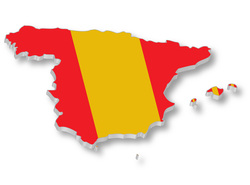 Buenas tardes. ¿En qué le puedo ayudar? If you could understand that, you might be one of the 35 million people living in the United States who identified Spanish as their primary language. If you couldn’t, then you just might be getting a sense of what so many in this country experience when they meet with their healthcare provider. As Physician Assistants we have a duty to “recognize and promote the value of diversity” as we hold the “dignity of all human beings” as our primary responsibility. While being bilingual isn’t required in order to honor those values, making a small effort can go a long way. It’s important to understand however that even the best of intentions can be misunderstood. The advent of telecommunications makes professional translators available practically anywhere in the world. Whether by phone, video or having an interpreter on location, healthcare providers should utilize a professional interpreter whenever possible. But what can you do right now to reach out to your Spanish speaking patients? Set a goal to conduct a brief physical exam asking only “yes/no” questions. Don’t bother with the grammar, just learn the phrases and perfect the pronunciation. You can also check out “Working Spanish for Medical Professionals” by Stacie McEniry. This reference book also includes a step by step pronunciation guide. Another great resource is the free website Medical Spanish for Healthcare Providers found at www.practicingspanish.com. Smartphone users should check out a great Spanish-English dictionary SpanishDict by Curiosity Media or the “Medical Spanish Podcast” by Molly Martin, MD. Both are available at no charge. Having lived outside of the United States, I’ve experienced firsthand how difficult life can be when you can’t communicate. It can be downright terrifying! But as I’ve progressed through clinical rotations, I’ve also seen how grateful Spanish speaking patients are when you make an effort to reach out—even if it’s only a small one. |
 RSS Feed
RSS Feed

